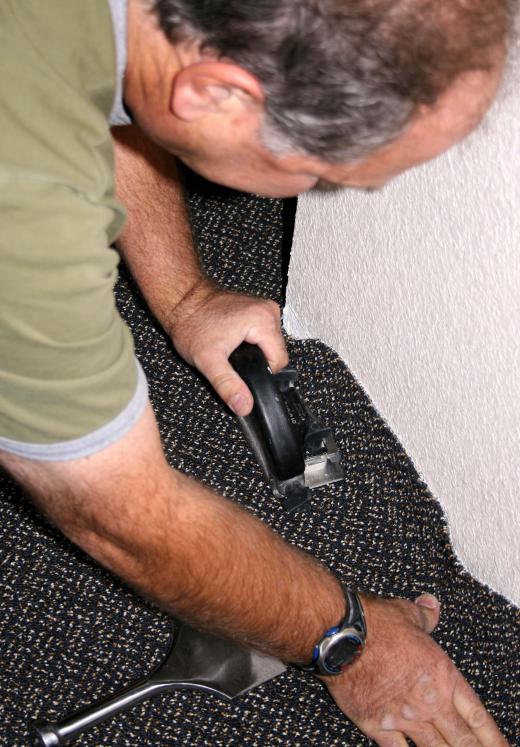Tack strip is a building material used in most carpet installations. Laid around the perimeter of the area to be carpeted, the tack strip holds the carpet in place without messy adhesives. These fasteners are available for use over both wood and concrete subfloors.
Most tack strips come in sections that are 4 feet (1.21 meters) long. The carpet strip itself is made from a thin piece of plywood, allowing the installer to cut them to the needed length easily. Gripper tacks are set into the tack strip in staggered rows at approximately a 60-degree angle. Each gripper rod also includes pre-installed fasteners, either concrete or wood nails, for attaching the strip to the appropriate subfloor.

The tack strip should be oriented with the gripper tacks pointing toward the wall and approximately 3/8 inch (0.95 centimeters) of space between it and the wall. All the tack strips should be laid out before being nailed into place, a process known as a "dry fit." Following this process makes it easy to see where full strips may be used and which areas require trimmed pieces, which can cut down on waste. After the dry fit is complete, the pieces may be nailed into place with the built-in nails.
Carpet pad may be installed after the tack strip is in place. The pad does not go on top of the tack strip, but is installed right up against it. Carpet pad is also not attached to the tack strip at all, but is only fastened to the subfloor.
When the carpet is brought into the room, it should be laid atop the tack strips with approximately 1 inch (2.54 centimeters) of excess carpet on all sides. Larger pieces of carpet may have to be trimmed to fit this size guideline. This does not complete the installation, and so the carpet should not yet be attached to the tack strip.
The final step of carpet installation is stretching, which pulls the carpet tight in all directions to avoid sagging and wrinkling. A tool called a knee kicker is used to stretch the carpet against the wall. The carpet may then be hooked onto the gripper tacks, with the excess trimmed away. No more than 3/4 inch (1.90 centimeters) of excess carpet should remain, so that it can be rolled under and tucked between the tack edge and wall or baseboard.
Carpet tack strips may last a very long time. After a few years of wear, many carpets may need to be restretched to take up slack in the flooring from traffic, furniture moving and general wear and tear. Tack strips do not generally need to be replaced during a restretch and may even remain in place for the next new carpet installation in the room.
